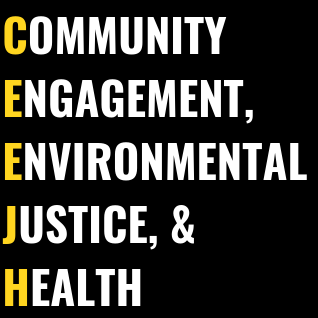Project RISE
In 2005, a train derailment and chlorine spill occurred in Graniteville, South Carolina, several people died with over 1,000 local residents impacted by the event. The community was medically underserved before the train disaster. There is a paucity of information on what the combined effects of a disaster and living in a medically underserved rural area have on a vulnerable community's health, access to health resources, and quality of life.
An attempt to capture the recovery piece of an already vulnerable community in the aftermath of a disaster only further serves to elucidate the grim landscape behind a medically underserved community. Attention is rarely drawn to the behind-the-scenes reality of post-recovery efforts within a fragmented community disproportionately suffering from pre-existing medical service delivery issues. This aspect of vulnerability is further exacerbated in the event of a disaster, but to our knowledge there has been little research documenting the effects of a disaster, particularly the "secondary surge" (e.g., the sudden increase in need for long-term health services following a disaster), on an already stressed community's health status and health care needs.
NIH funded RISE (Restoration in Graniteville Through Supportive Engagement), a project to understand the long-term effects of the man-made disaster in Graniteville, South Carolina. Dr. Wilson was a Co-PI of the project with Dr. Lucy Annang, an associate professor at the Arnold School of Public Health, University of South Carolina. The goal of this project was to use both qualitative and quantitative data collection and analysis, with community-based participatory research (CBPR), to document how the challenges presented by the post-disaster surge in health service delivery are further compounded within a medically underserved community in the rural South.
To achieve this goal, the project had the following aims: 1) assess community members' perceptions about the long-term impacts of the disaster on public health, quality of life, and access to health services; 2) assess healthcare providers' perceptions about the long-term impacts of the disaster on public health, quality of life, and access to health services; and 3) assess hospital discharge data (inpatient and emergency room) from area hospitals for utilization and severity and frequency of various diagnoses and procedures pre- and post-disaster. The project was novel because the team studied the long-term health impacts of a chlorine spill in a small rural medically underserved area for the first time. The information has been used to help improve recovery and revitalization efforts in the community.
Further reading:
Ingram, L. A., Tinago, C. B., Cai, B., Sanders, L. W., Bevington, T., Wilson, S., ... & Svendsen, E. (2018). Examining Long-Term Mental Health in a Rural Community Post-Disaster: A Mixed Methods Approach. Journal of health care for the poor and underserved, 29(1), 284-302.
Svendsen, E. R., Karzic-Medjunjanin, D., Vena, J., Annang-Ingram, L., Wilson, S., Cai, B., ... & Fulcher, A. (2017). Respiratory-Related Hospitalizations Before and After the Graniteville Chlorine Disaster. In B59. CHEMICAL EXPOSURES (pp. A3877-A3877). American Thoracic Society.
Annang, L., Wilson, S., Tinago, C., Wright Sanders, L., Bevington, T., Carlos, B., ... & Svendsen, E. (2016). Photovoice: Assessing the Long-Term Impact of a Disaster on a Community’s Quality of Life. Qualitative health research, 26(2), 241-251.
Abara, W., Wilson, S., Vena, J., Bevington, T., Culley, J. M., Annang, L., ... & Svendsen, E. (2014). Engaging a Chemical Disaster Community: Lessons from Graniteville. International journal of environmental research and public health, 11(6), 5684-5697.
Runkle, J. R., Zhang, H., Karmaus, W., Brock-Martin, A., & Svendsen, E. R. (2013). Long-term impact of environmental public health disaster on health system performance: experiences from the Graniteville, South Carolina chlorine spill. Southern medical journal, 106(1), 74.
Runkle, J. D., Zhang, H., Karmaus, W., Martin, A. B., & Svendsen, E. R. (2012). Prediction of unmet primary care needs for the medically vulnerable post-disaster: an interrupted time-series analysis of health system responses. International journal of environmental research and public health, 9(10), 3384-3397.


